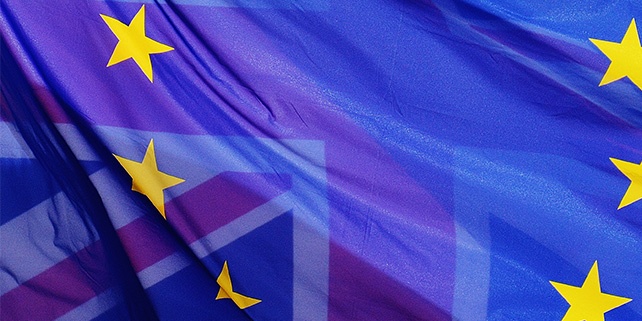On June 26, 2015, 52% of the voting public in the United Kingdom told the European Union that they needed some distance in what is referred to as Brexit. The question facing many businesses is, how does this affect our intellectual property filing strategy going forward? The most simple answer is “not much” in the immediate future, but there is possible fallout related to the Unified Patent Court Agreement and Community Trademarks.
Although Brexit is now a familiar term, not everyone understands what it refers to or what is going to happen now that the Brexit vote has taken place. Brexit did not actually sever ties between the UK and the EU just yet. Instead, it is the first step in what could be a very long process with an array of possible outcomes.
Article 50 of the Lisbon Treaty, which governs the withdrawal process, requires a departing member to provide official notification of its withdrawal. Once notification is received, a two-year period of negotiations begins which is intended to make arrangements for future relations between the EU and former member. It is possible to extend this period beyond the two years and it is also possible that the withdrawal can be rescinded by the leaving member.
Shortly after the Brexit vote, Prime Minister Theresa May announced that official notice would be served to the EU in March of 2017. The UK Supreme Court moved swiftly to require Parliament’s consultation prior to providing notice. Although the short and sweet Brexit Bill that was introduced in the House of Commons appeared to face a difficult road through the House of Lords, the bill ultimately passed Parliament. Prime Minister May is now set to trigger Article 50 on March 29, beginning negotiations to separate the UK from the EU.
THE MORE THINGS CHANGE, THE MORE THEY STAY THE SAME
Even with the full force of Brexit a few years out, it is safe to say that the divorce between the UK and EU will not impact current filing tactics. There are presently two avenues to start seeking protection in Europe: file national applications in each desired country or file a single application at the European Patent Office (EPO). Neither route is in the crosshairs of Brexit.
If part of the filing strategy previously included filing a separate national phase application in the UK before Brexit, the same should continue to be done after Brexit is fully set into place. Just as before, the application will be prosecuted in accordance with UK patent laws and thereafter be subject to UK patent laws if granted.
Many innovators have been concerned that Brexit will remove the UK from involvement with the EPO. The EPO route allows a single application to be filed and examined for patentability. If patentability is found, the application is then validated in the individual countries for enforcement and maintenance.
It is a common misconception that because the EPO permits a single application to be filed among numerous European countries, that the EPO is the creation of or inextricably tied to the EU. This is not the case. The EPO is the result of a multilateral treaty among thirty-eight European countries, which includes all of the EU members, including the UK, known as the European Patent Convention (EPC). The European portion of the EPC is geographically based, not politically, and thus membership is separate from the EU. Because the EPC has no relationship to the EU, after Brexit, applications can still be filed with the EPO and examined for subsequent validation and enforcement in the UK.
In a similar vein, Brexit will not negatively impact applications seeking to take advantage of the Patent Cooperation Treaty or the Patent Prosecution Highway.
FILLING IN THE GAPS
An area that will need attention is Community Trademarks (CTM), which are also known as European Union Trademarks (EUTM). CTMs allow an applicant to file a single application for trademark protection and thereafter receive protection among every EU Member. Although it is possible that negotiations will address this area of many businesses’ intellectual property portfolios, it is important to track any CTM’s that make up a part of that portfolio.
If needed, it may be useful to seek protection in advance in the UK to avoid any lapse in protection that Brexit may cause. A lapse could open the door to competitors with intent-to-use applications or pre-existing common law usage. If protection is sought in the UK, be wary of dates of first use that may have been based on general EU usage and not exclusive UK usage. Conversely, if first usage in the EU was based on the UK, it may harm the status of the CTM.
BE PREPARED
At first glance, it appeared that Brexit happened overnight. The good news is that it hasn’t even really begun and it is not likely to have much of an impact on how things have been done in the past with patent filings at the EPO. Take advantage of this time and to get your IP portfolio in shape to not only address the separation of the EU and the UK, but also the unification of much of Europe through the Unified Patent Court Agreement (UPCA). Check back soon for more details on how Brexit will impact the UPCA in the second part of this series.



